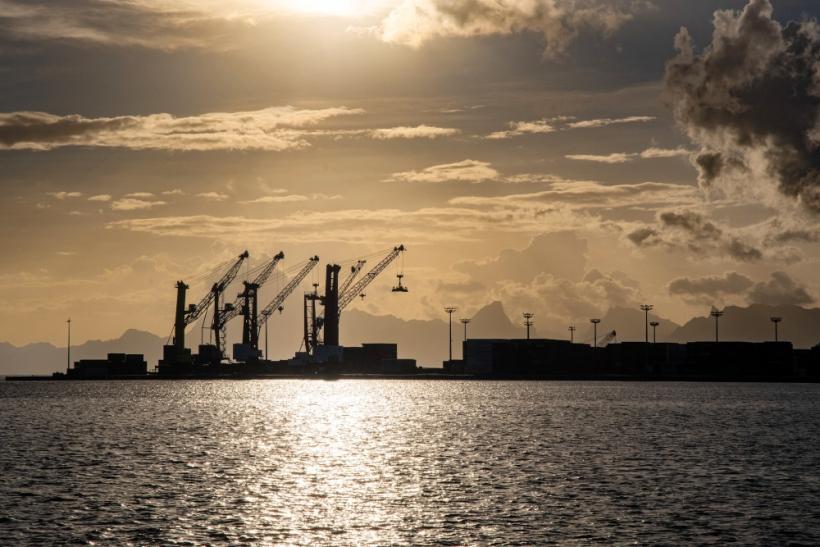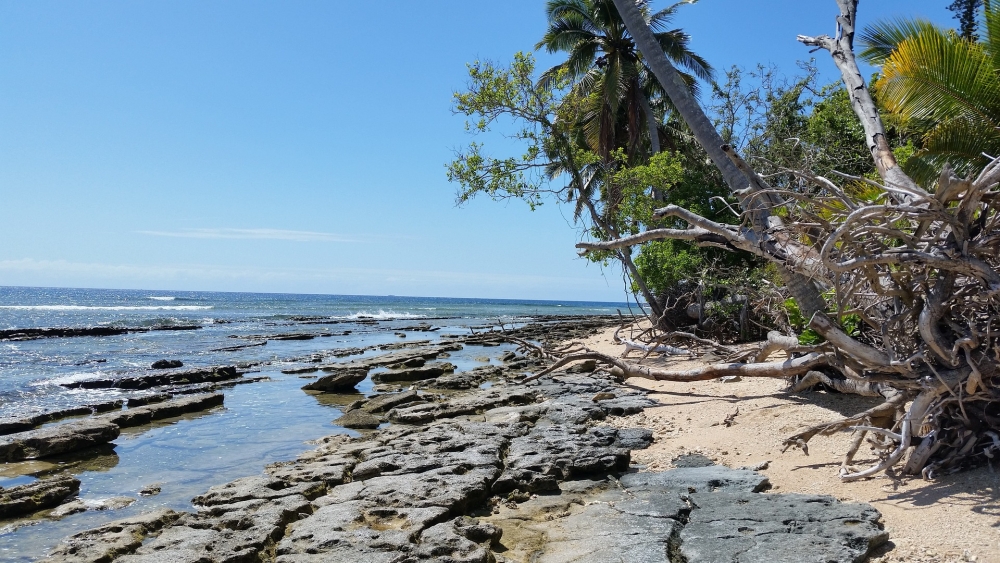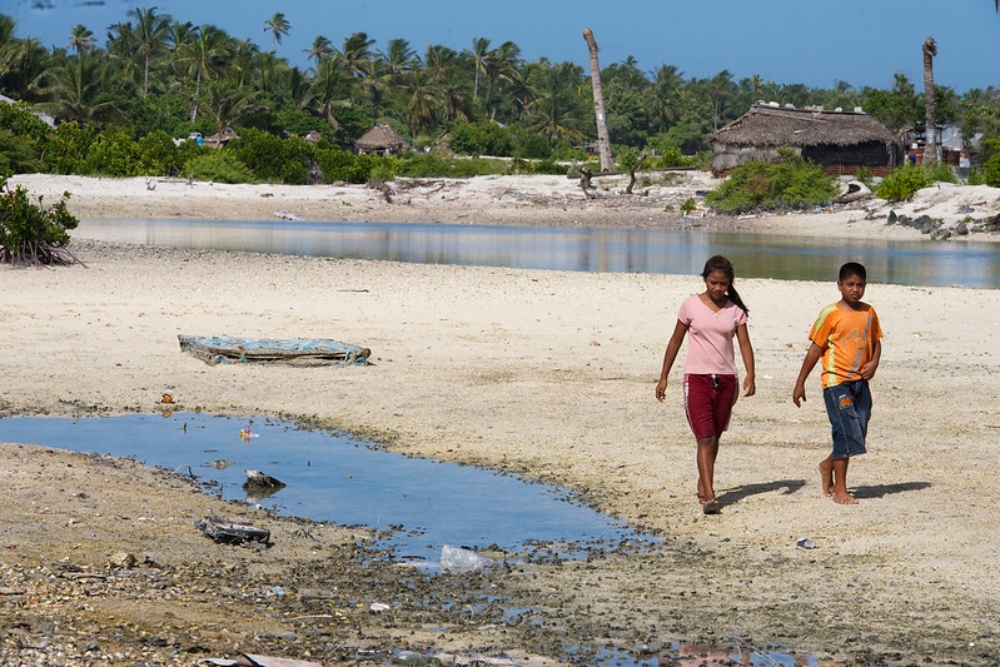5 Ways in which Mutual Aid can Strengthen Power Resilience in the Pacific Region

Pacific Developing Countries (PDCs) are among the countries most vulnerable to climate change and natural disasters, globally. A 2012 World Bank Group study revealed that of the 20 countries in the world with the highest average annual disaster losses, as scaled by gross domestic product (GDP), eight are Pacific Island Countries. As a majority of people in PDCs and a significant share of their infrastructure are concentrated within meters of the coastline, the power sector in these nations is highly vulnerable to the recurring threat of natural disasters. The power sector often sustains massive damages, resulting in significant losses for households, businesses, and the economy as a whole. While power reconnection is often an immediate priority, response and recovery efforts can be challenging. This is due to limited human capacity and supplies, and difficulties in accessing impacted areas owing to their geographical setting. Strengthening the resilience of the power sector in the Pacific region requires a multifaceted approach. This encompasses efforts to strengthen its ability to anticipate and absorb shocks as well as those focused on improving the region’s ability to recover quickly from a hazardous event.
The concept of mutual aid has been used by many power utilities to accelerate recovery and restoration efforts. ‘Mutual aid’ refers to mutual partnerships or arrangements that are put in place to provide assistance before, during, and after a natural disaster or emergency event. This enables organizations to share resources to meet their urgent needs after climatic shocks or emergencies, and facilitates recovery and restoration efforts.
In terms of power utilities, the two notable mutual aid schemes include: the American Public Power Association (APPA) Mutual Aid Network and the Caribbean Electric Utility Services Corporation (CARILEC) Disaster Assistance Program (CDAP). The APPA Mutual Aid Network comprises more than 2,000 power companies in the United States and Territories that stand ready to mobilize crews and materials when requested by members after a disaster. Likewise, in the Caribbean, the CDAP has 27 member utilities that combine their financial and technical resources towards disaster relief efforts after a catastrophe.
 Photo Credit: Florent Foissac, Pixabay
Photo Credit: Florent Foissac, Pixabay
Some power utilities in the northern region of the Pacific Islands have bilateral agreements for the provision of mutual support post-disaster. For instance, the Commonwealth Utility Corporation (CUC) in the Commonwealth of the Northern Mariana Islands (CNMI) has a longstanding partnership with the Guam Power Authority (GPA) and Memorandum of Understanding (MOU) with the Pohnpei Utilities Corporation and Kosrae Utility Authority. In the Federated States of Micronesia (FSM), Republic of the Marshall Islands (RMI), and the CNMI, mutual aid is well-established, since they fall under the ambit of the Federal Emergency Management Agency (FEMA). However, for utilities in the Southern Pacific, mutual arrangements are usually established post-disaster, particularly after major catastrophic events, when the magnitude of the restoration work exceeds the local capacity and resources. For instance, when Tropical Cyclone Winston struck Fiji in February 2016, post-disaster mutual arrangements enabled the deployment of linesmen from Tonga Power Limited to support Energy Fiji Limited’s power restoration program.
Given their exposure to diverse and significant natural hazards, including tropical cyclones, floods, storm surges, and earthquakes, there is a significant need and opportunity to further develop mutual aid schemes among Pacific power utilities. Accordingly, the Pacific Power Association (PPA), with technical assistance from the World Bank, is working to develop the PPA Disaster Assistance Program (PDAP), a mutual aid program for power utilities in the region.
The PDAP is a mutual, in-kind assistance program that allows member utilities to obtain support from peer utilities following devastating disasters. Assistance for the affected utilities mainly involves mobilization of technical crew and provision of equipment by other member utilities.
Mechanisms Contributing to Strengthened Power Resilience
 Photo Credit: UN Photo/Eskinder Debebe
Photo Credit: UN Photo/Eskinder Debebe
The PDAP will contribute to strengthening power resilience in the Pacific region through the following mechanisms:
- The PDAP pre-establishes the procedures and processes to be followed when mutual aid is required, eliminating the need for negotiation after a disaster strikes. The PDAP Operations Manual details the processes for implementation and coordination, and the roles and responsibilities of each party under different phases of the disaster management cycle. This will facilitate the rapid deployment of technical crew and equipment to disaster-stricken utilities, thereby hastening the power recovery process;
- The program incorporates incentives for disaster preparedness and mitigation, and encourages utilities to update their disaster management plans on a regular basis, develop business continuity plans, and maintain a minimum level of emergency stock (e.g., tools, equipment, and materials). The program requires utilities and the PPA to conduct regular training, drills, and simulation exercises to build, strengthen, and maintain their capabilities. A state of readiness will facilitate their response to any disaster;
- The program also provides opportunities for networking and collaboration, where good practices and lessons learned from past events are shared to enhance learning and build capacity;
- The program will encourage alignment of standards by exploring the partitioning of utilities into the Northern and Southern Pacific zones, depending on the power systems and standards used. This will ensure consistency in asset management plans and risk management standards, in alignment with the best practice in the region, strengthening the ability of utilities to support each other;
- The program also includes a PDAP Fund to reimburse assisting utilities for costs incurred[1] in providing mutual support. Guaranteed reimbursement will increase the likelihood of affected power utilities rapidly requesting mutual support, helping them provide assistance for timely post-disaster power restoration.
The design of the PDAP and PDAP Fund has been informed by extensive data gathering, analysis, and consultations since 2019. Efforts include consultations with PPA and member utilities and donors, gathering lessons learned and good practices from similar programs such as CARILEC, and exploring risk transfer options through the Pacific Catastrophe Risk Insurance Company (PICRIC).
The establishment of PDAP represents a milestone achievement in strengthening the power resilience in the Pacific region. The World Bank’s Pacific Energy Team and the Crisis and Disaster Risk Finance Team, with support from the Japan-World Bank Program for Mainstreaming Disaster Risk Management in Developing Countries, led the technical design of the PDAP. To date, 14[2] utilities have signed an MOU to formalize their PDAP membership. More utilities are anticipated to join the program, which is expected to be launched in 2023.
This Pacific Power Association Disaster Assistance Program was made possible with financial support from the Japan-Bank Program for Mainstreaming DRM in Developing Countries, which is financed by the Government of Japan and receives technical support from the World Bank Tokyo Disaster Risk Management Hub.

[1] This includes daily allowances, accommodation, ground transport allowance, freight costs for the transfer of specialized equipment, tools and machinery
[2] Chuuk Public Utility Corporation (FSM); Electric Power Corporation (Samoa); Yap State Public Corporation (FSM); Kosrae Utility Authority (FSM); Kwajalein Atoll Joint Utilities Resources Incorporated (RMI); Pohnpei Utilities Corporation (FSM); Marshalls Energy Company (RMI); Palau Public Utility Corporation, Nauru Utilities Corporation; Public Utilities Board (Kiribati); Solomon Islands Electricity Authority; Tonga Power Ltd, Tuvalu Electricity Corporation; Te Aponga Uira (Cook Islands)